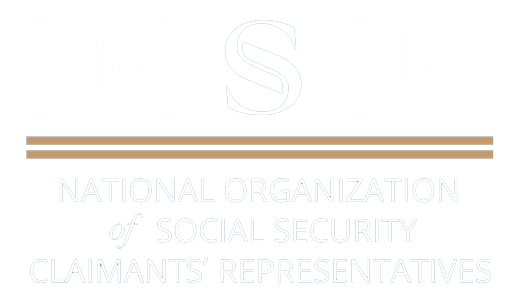
How Much Money Will I Get if I Win Social Security Disability?
People often ask our Social Security Disability lawyers how much money they will get if their disability benefits claim is approved.
This makes sense because you’re putting in a lot of time and effort to get disability benefits and want to know if you’re going to make enough money to survive.
Unfortunately, the answer to this question isn’t cut and dried.
The first thing shaping how much you will get is the type of benefit you receive.
Usually, when we talk about Social Security Disability, we’re talking about two different types of benefits.
- The first type of benefit is Title II Benefits or Disability Insurance Benefits (DIB), also called Social Security Disability Insurance (SSDI). All three names mean the same thing, but we will refer to them as DIB throughout the rest of this post.
- The second type of benefit is Title XVI benefits or Supplemental Security Income (SSI).
In this blog post, the Utah Social Security Disability lawyers at Barnes Disability Advocates explain what you need to know about these two types of financial relief for serious health problems.
Subhead: What Is the Difference Between DIB/SSDI and SSI?
The quick explanation of the difference between the two benefits centers around work credits.
While working, you should have paid money into Social Security through your payroll taxes. This payment is like paying a premium on a disability insurance policy.
The benefit you can get for paying these taxes is DIB (or called SSDI, as we said).
To qualify for benefits, you need to have a certain number of quarters of work, or work credits during a certain period of time, typically five of the 10 years, or 20 of the 40 possible quarters, before you became unable to work.
The date you are last eligible for DIB benefits is called the “date last insured” or DLI. Your disability must begin before your DLI for you to be eligible for DIB.
There are also special cases where you can apply on someone else’s work credits, like a deceased spouse or parent’s work credits, as long as that person met the qualification requirements, but we won’t go into that too much here.
The other type of benefit, SSI, doesn’t require you to have work credits, but it does require you to show a certain amount of financial need.
The rule is that your assets and resources must be under $2,000 if you are single and $3,000 if you are married.
These amounts are so low because the U.S. Congress has not updated them since the program started in the early 1970s.
A good rule of thumb is that if you are eligible for Medicaid or food stamps, you will be eligible for SSI. You also, of course, must have a disability that rules out working. Or you can be aged or blind and get SSI.
How Much Will My Social Security Disability Insurance Benefits Pay?
With DIB, the amount that you receive each month depends on the amount of money you paid into Social Security.
This is similar to how they determine your retirement pay. The national average DIB benefit was about $1,580 per month as of 2025. Social Security provides several ways for you to find out what you would be eligible to receive.
The best way is to create an account on Social Security’s website. You can access the site at www.ssa.gov.
Once there, click on the “Sign In” button in the upper right. You’ll go to a page with several login options. Just above those buttons is a link to create an account at login.gov.
Click that link and follow the steps to set up an account. The account set-up is involved and will ask some detailed questions from your credit report.
After successfully creating an account, you can verify your earnings and get your Social Security Statement. Look for a paragraph specifically about disability benefits. The estimated amount of your benefits will be in that paragraph in bold numbers.
Social Security mails Social Security Statements annually to workers who are 60 and over, aren’t currently receiving Social Security benefits, and don’t have a Social Security online account.
Social Security also provides several calculators you can use to determine your own benefit based on different scenarios. If all else fails, you can call Social Security and ask them for an estimate or send you a benefit statement.
Once you have your statement or have logged in to your online account, you want to look for the line that tells you whether you have earned enough credits to qualify for disability and provides the amount.
That amount is the best estimate for what you will receive if you are approved for DIB.
People often ask us what effect other assets or income will have on your DIB. With DIB, other assets or income (such as property, investments or a spouse’s income) do not affect the amount of your benefit, as long as those assets or income don’t come from you still working.
If you are working and earning over the current limit set by Social Security ($1,620 per month in 2025), you will become ineligible for disability benefits. However, if you receive $100 a month from an annuity, it will not affect the amount of your DIB payment.
How Much Does SSI Pay?
If you are filing for SSI, things are different.
The federal maximum SSI benefit changes annually. For 2025, it was set at $967 per month for an individual, with the maximum couple benefit at $1,450.
The couple benefit in this case means both members of the couple are on SSI.
Now, this is a maximum, meaning that the benefit could be lower depending on your situation.
Any assets or income available to a person receiving SSI benefits count against the SSI the person receives, including DIB benefits if they receive both.
The rules for calculating SSI get quite complicated and are beyond the scope of this article. Just realize that SSI benefits are offset by any resources you have access to, including land, vehicles, cash in bank accounts or at home, gold, or any other assets that you can turn into cash.
Social Security also counts income from other family members, such as a spouse or parent (for children’s SSI), so a person’s eligibility for SSI declines or disappears if a spouse’s income is too high.
The one major exception to this rule is that Social Security will exclude one house (if you live in it) and one car (as long as you use it for needed transportation), no matter what their value, from this resources reduction.
One common situation is for someone to receive both DIB and SSI benefits at the same time.
This can only happen if the amount of your DIB is less than the federal maximum SSI benefit because there is a dollar-for-dollar offset. For example, if you receive $349 in DIB, you can receive up to $618 in SSI benefits. On the other hand, if your DIB is more than $967, you will not be eligible for ongoing SSI benefits.
This explanation of the benefit amounts and rules is very simplified. Each individual’s situation is different and can fluctuate from month to month. But this should provide you with a good understanding of the amount you may be eligible to receive in disability benefits.
For specific questions about your situation, talk to the disability attorneys at Barnes Disability Advocates.

